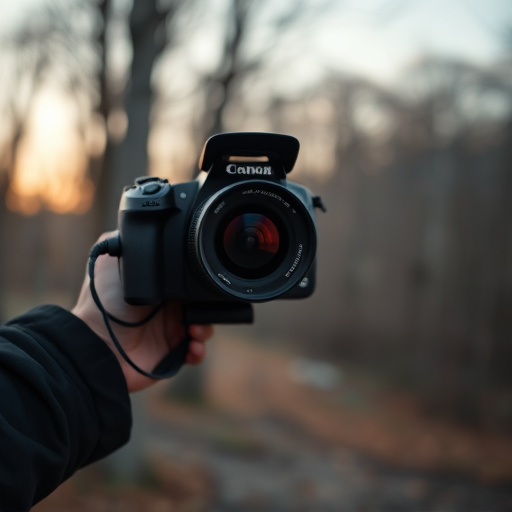Understanding common spy camera placements is crucial for effective concealment. Inspect areas like ceiling corners and door handles for disguises. Examine wiring and infrared signals for giveaways. Use signal analyzers to detect wireless signals. Monitor electrical bills and unusual device activity. Audit app permissions, update firmware, and use antivirus software to prevent unauthorized surveillance.
Uncover hidden monitoring devices with these expert tips on how to conceal spy cameras. From understanding common placement to detecting wireless signals, this guide equips you to stay ahead of covert surveillance. Examine visible and infrared wires carefully, look for power anomalies, and identify unusual software behaviors. By mastering these techniques, you can protect your privacy in today’s digital era.
- Understand Common Spy Camera Placement
- Examine Visible and Infrared Wires Carefully
- Detect Wireless Signals Using Technology
- Look for Power Outages or Fluctuations
- Identify Unusual Behaviors in Software/Apps
Understand Common Spy Camera Placement
Understanding where spy cameras are commonly placed is a crucial step in learning how to conceal them effectively. Many hidden cameras are discreetly positioned in areas that offer optimal visibility or seem innocuous, such as ceiling corners, door handles, clock radios, smoke detectors, and even fake fire alarms. Familiarize yourself with these common placement spots to better anticipate where they might be hidden. Knowing the tactics used by those installing covert surveillance equipment allows you to take proactive measures in deterring potential spies.
To Conceal Spy Cameras, consider taking simple precautions like covering or masking these high-risk areas with decorative items that blend in with your surroundings. For example, use a well-placed potted plant to cover a ceiling corner camera, or place a decorative box over a fake smoke detector. Regularly inspect your environment for suspicious devices and be mindful of any unfamiliar objects or alterations that might signal the presence of hidden surveillance equipment.
Examine Visible and Infrared Wires Carefully
When it comes to hiding monitoring devices, one of the first steps is to carefully examine visible and infrared wires. Spy cameras, often disguised as everyday items, still require power and data transmission, which means they have wires connected to them. These wires can be a giveaway if not managed properly. By taking a close look at the wiring, you can identify any obvious signs of a hidden camera system. Check for thin, flexible cables that might be tucked away in crevices or behind furniture. Infrared (IR) signals are also worth paying attention to; IR lights are often used in spy cameras to provide night vision capabilities. Examining these wires and understanding their placement is a crucial step in learning how to conceal spy cameras effectively.
Detect Wireless Signals Using Technology
Detecting wireless signals is a crucial step in identifying hidden monitoring devices, such as spy cameras. Advanced technology like signal analyzers and spectrometers can be employed to uncover these covert surveillance systems. These tools are capable of scanning through various frequencies and wavelengths, enabling users to pinpoint specific signals that may indicate the presence of a hidden camera. By utilizing this tech, individuals can learn how to conceal spy cameras more effectively.
For instance, signal analyzers can detect wireless transmission from remote controls, motion detectors, and audio/video recorders used in spy cameras. By identifying these signals, one can take proactive measures to mask or disrupt them, making it harder for unauthorized devices to gather intelligence. This knowledge is particularly valuable for those seeking to protect their privacy, ensuring that hidden monitoring devices remain undetected.
Look for Power Outages or Fluctuations
Unsuspecting spy cameras often rely on power sources that can be detected by observant individuals. One way to conceal a monitoring device is by avoiding or masking power outages and fluctuations. Regularly checking your electrical bills for sudden spikes or dips can serve as an early warning sign, alerting you to potential hidden cameras.
If you notice unusual activity, such as lights flickering or devices turning on and off autonomously, it could indicate the presence of a covert surveillance system. To effectively How to Conceal Spy Cameras, understanding power consumption patterns in your home or office can help you identify and neutralize these telltale signs, ensuring no hidden cameras go undetected.
Identify Unusual Behaviors in Software/Apps
Unusual behaviors in software or apps can often indicate the presence of hidden monitoring devices, such as spy cameras. When using digital tools, pay attention to any unexpected or unexplained functionalities. For instance, if your camera or microphone suddenly turns on without your consent or if you notice unusual app permissions, it might be a red flag. Regularly audit the permissions granted to apps and software to ensure they align with your activities.
To conceal spy cameras, it’s crucial to stay vigilant and proactive. Keep your devices’ firmware and software updated to patch any known security vulnerabilities that could be exploited for surveillance purposes. Use reputable antivirus software and regularly scan for malicious codes or hidden tracking programs. Additionally, be cautious when downloading apps from untrusted sources—always read user reviews and check the app’s permissions before installation.
Uncovering hidden monitoring devices requires a keen eye and an understanding of modern surveillance techniques. By learning common spy camera placement, scrutinizing visible and infrared wires, and utilizing technology to detect wireless signals, you can become more adept at concealing your privacy. Stay vigilant against power anomalies and unusual software behaviors, as they may indicate the presence of covert monitoring. Armed with these tips, you can take proactive measures to protect your personal space and maintain your privacy in today’s digital age.
